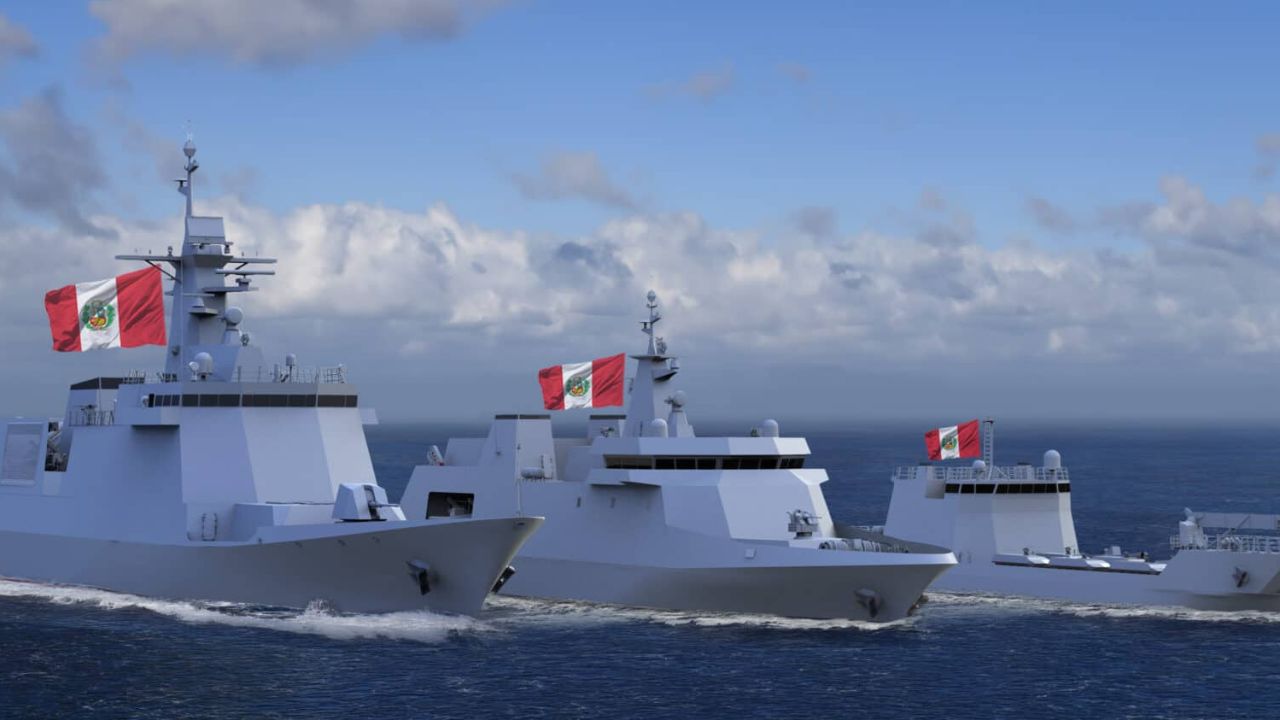Peru’s state-owned shipbuilder SIMA (Servicios Industriales de la Marina) is moving to commence construction of a new multirole frigate for the Peruvian Navy by December 2025.
The initial production steps will include steel-cutting and module assembly, marking a major step forward in Peru’s plan to modernize its surface fleet and expand domestic shipbuilding capacity.
Program At A Glance
The target to start work by December 2025 reflects a sequence of preparations now reaching maturity: final technical reviews, supplier onboarding, and production line readiness at SIMA.
Launching with steel-cutting ensures long-lead materials and modules begin flowing through the yard, allowing outfitting to proceed in early 2026.
This schedule also dovetails with ongoing work on the program’s other ships, giving the yard live experience with modular construction before it scales up for the frigate.
Why The Timeline Matters
| Item | Detail |
|---|---|
| Planned start | By December 2025 (steel-cutting and module assembly) |
| Shipbuilder | SIMA Perú (Callao shipyard as main hub) |
| Industrial partner | HD Hyundai Heavy Industries (HD HHI) (technology, design, and know-how transfer) |
| Frigate design | HDF-3200 baseline |
| Estimated specs | ~3,400 tonnes displacement; ~127 m length; ~26.5 knots top speed; ~6,000 nm range |
| Sister projects | 1 OPV + 2 auxiliary vessels under the same modernization package |
| Industrial impact | 10,000+ jobs projected across SIMA facilities (Callao, Chimbote, Iquitos) |
Partnership And Local Build
A central pillar of the program is local construction in Peru with technology transfer from HD Hyundai Heavy Industries.
The approach brings proven processes, digital shipyard practices, and documentation into SIMA, while keeping hull assembly, integration, and much of the supply chain in country.
Over time, this model is expected to deepen Peruvian workforce skills, boost vendor development, and reduce reliance on foreign yards for sustainment and upgrades.
Design And Capabilities To Expect
The frigate is expected to be based on the HDF-3200 family — a balanced, ocean-going platform suitable for maritime security, surface and subsurface surveillance, search and rescue, and coalition operations in the Pacific.
Typical parameters cited for this class indicate a ~3,400-ton ship, about 127 meters long, with ~26.5-knot sprint speed and ~6,000-nautical-mile endurance.
While final combat-system selections are not public, a multirole fit generally includes a modern CMS, 3D surveillance radar, point and area air defense, anti-surface and ASW options (including a helicopter deck/hangar), and electronic support measures — all aligned with Peru’s need for flexible, upgradeable capability.
Industrial And Economic Impact
Beyond increasing naval strength, the program is designed to catalyze Peru’s maritime industry.
With module construction already practiced on the offshore patrol vessel (OPV), SIMA is standardizing jigs, fixtures, and workflows for faster hull assembly and outfitting.
The broader package — one OPV and two auxiliaries alongside the frigate — helps keep production lines warm, supports supplier localization, and sustains 10,000+ jobs across Callao, Chimbote, and Iquitos.
The result: a durable foundation for maintenance, mid-life upgrades, and future ship classes built at home.
Key Milestones To Watch
- Late 2025: Steel-cutting and initial module assembly for the frigate at SIMA.
- Early–Mid 2026: Block integration and major systems installation; parallel progress on OPV and auxiliaries stabilizes yard throughput.
- Sea Trials Window (Post-Outfitting): Progressive trials once propulsion, navigation, and combat-system integration reach test readiness.
- Delivery Trajectory: Handover targeted following successful trials and crew training, with lessons feeding forward into subsequent platforms.
Peru’s plan to start building its new frigate by December 2025 signals a turning point: the country is pairing SIMA’s expanding capacity with HD HHI’s design and process expertise to deliver a capable, multirole warship — and a stronger domestic industrial base.
With modular construction, a clear production roadmap, and sustained investment in people and tooling, Peru is positioning itself for a new era of naval modernization and shipbuilding self-reliance.







